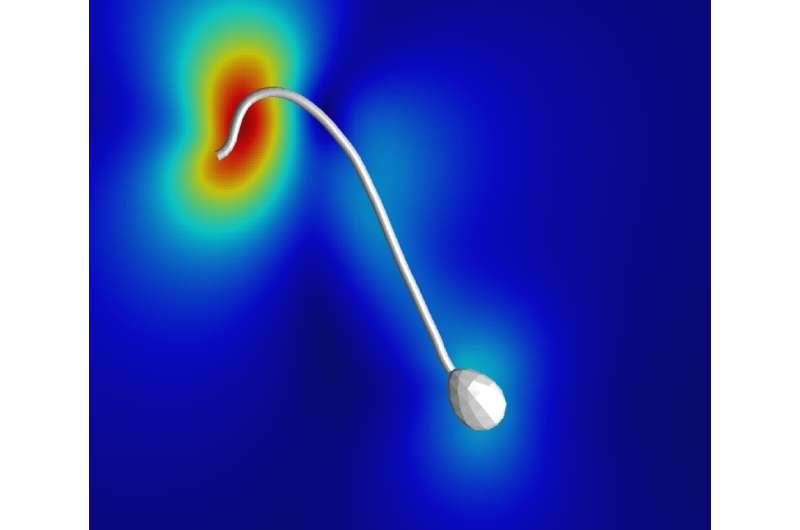New sperm research could lead to cut in infertility rate

Sperm and mathematics don't appear to be the likeliest of bedfellows - but new research bringing the two together could lead to devices that could cut infertility rates.
Today sees the start of National Fertility Awareness Week (31 October - 6 November 2016) and with infertility affecting about one in six people, a team of mathematicians, bioengineers, computer engineers and clinicians are working on a system that could identify which sperm are able to successfully deliver their cargo of DNA to the egg.
The University of Birmingham research, funded through an Engineering and Physical Sciences Research Council (EPSRC) Healthcare Technologies Challenge Award, could then lead to better treatment decisions that would save distress and expense and lead to more healthy births.
Infertility treatments such as IVF are currently hampered by imprecise diagnostics, with the monitoring of sperm not utilising cutting edge technology.
However that could soon change, with the team hopeful of creating a new system which would utilise phase-contrast imaging to observe sperm before analysing them mathematically.
This could then lead to a better way of identifying which sperm have the attributes required to successfully fertilise the egg, and an improvement in the advice provided to couples going through fertility treatment.
Project Lead Dr Dave Smith, from the University of Birmingham, says he hopes the work could lead to new equipment that could be used in andrology clinics to identify the condition of sperm and what treatment or lifestyle changes are required.
He said: "Unfortunately infertility is a common problem, with male infertility accounting for about half of all cases. The problem is that the diagnostic methods used at the moment are quite coarse and there aren't good enough tools to deal with it either.
"That has a very big knock-on effect because IVF is very expensive, not everyone can have the treatment, and it can be very gruelling, especially for the female partner.
"We hope this could tell you not just core statistics about sperm such as swimming speed, but which ones have the 'right stuff' and which ones are swimming efficiently and are correctly formed.
"We want to provide a new way of looking at cells, what infertility is and what a cell should be able to do.
"The long-term impact could lead to a better use of resources for treatments such as IVF and hopefully improved success rates. We would be able to give people the right kind of advice on lifestyle choices, so for example if smoking is damaging sperm quality we can identify that and advise the patient accordingly."
EPSRC's Chief Executive, Professor Philip Nelson, said: "This research demonstrates the significance of the work being undertaken by the winners of our Healthcare Technologies Challenge Awards.
"The impact of the work could have a wide range of important implications, from allowing for better analysis of sperm to reducing the distress caused by infertility issues and improving the advice that can be offered to couples trying to conceive.
"These Healthcare Technologies Challenge Award winners are our future research leaders who will be instrumental in ensuring the UK can meet 21st century healthcare needs and thrive as a healthy nation."

















